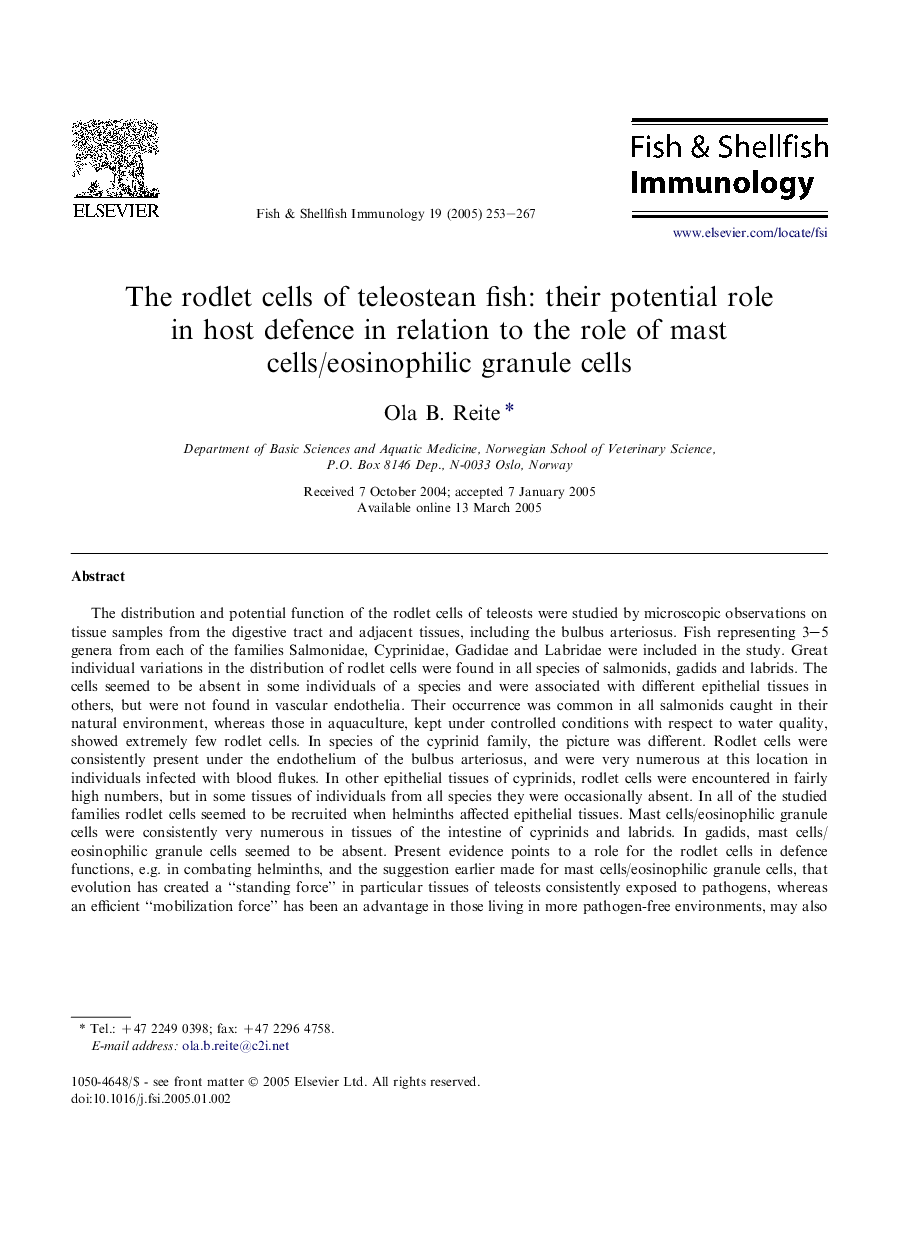| کد مقاله | کد نشریه | سال انتشار | مقاله انگلیسی | نسخه تمام متن |
|---|---|---|---|---|
| 8978801 | 1106875 | 2005 | 15 صفحه PDF | دانلود رایگان |
عنوان انگلیسی مقاله ISI
The rodlet cells of teleostean fish: their potential role in host defence in relation to the role of mast cells/eosinophilic granule cells
دانلود مقاله + سفارش ترجمه
دانلود مقاله ISI انگلیسی
رایگان برای ایرانیان
کلمات کلیدی
موضوعات مرتبط
علوم زیستی و بیوفناوری
علوم کشاورزی و بیولوژیک
علوم آبزیان
پیش نمایش صفحه اول مقاله

چکیده انگلیسی
The distribution and potential function of the rodlet cells of teleosts were studied by microscopic observations on tissue samples from the digestive tract and adjacent tissues, including the bulbus arteriosus. Fish representing 3-5 genera from each of the families Salmonidae, Cyprinidae, Gadidae and Labridae were included in the study. Great individual variations in the distribution of rodlet cells were found in all species of salmonids, gadids and labrids. The cells seemed to be absent in some individuals of a species and were associated with different epithelial tissues in others, but were not found in vascular endothelia. Their occurrence was common in all salmonids caught in their natural environment, whereas those in aquaculture, kept under controlled conditions with respect to water quality, showed extremely few rodlet cells. In species of the cyprinid family, the picture was different. Rodlet cells were consistently present under the endothelium of the bulbus arteriosus, and were very numerous at this location in individuals infected with blood flukes. In other epithelial tissues of cyprinids, rodlet cells were encountered in fairly high numbers, but in some tissues of individuals from all species they were occasionally absent. In all of the studied families rodlet cells seemed to be recruited when helminths affected epithelial tissues. Mast cells/eosinophilic granule cells were consistently very numerous in tissues of the intestine of cyprinids and labrids. In gadids, mast cells/eosinophilic granule cells seemed to be absent. Present evidence points to a role for the rodlet cells in defence functions, e.g. in combating helminths, and the suggestion earlier made for mast cells/eosinophilic granule cells, that evolution has created a “standing force” in particular tissues of teleosts consistently exposed to pathogens, whereas an efficient “mobilization force” has been an advantage in those living in more pathogen-free environments, may also be applied to rodlet cells, explaining the differences between teleostean families with respect to their distribution pattern.
ناشر
Database: Elsevier - ScienceDirect (ساینس دایرکت)
Journal: Fish & Shellfish Immunology - Volume 19, Issue 3, September 2005, Pages 253-267
Journal: Fish & Shellfish Immunology - Volume 19, Issue 3, September 2005, Pages 253-267
نویسندگان
Ola B. Reite,